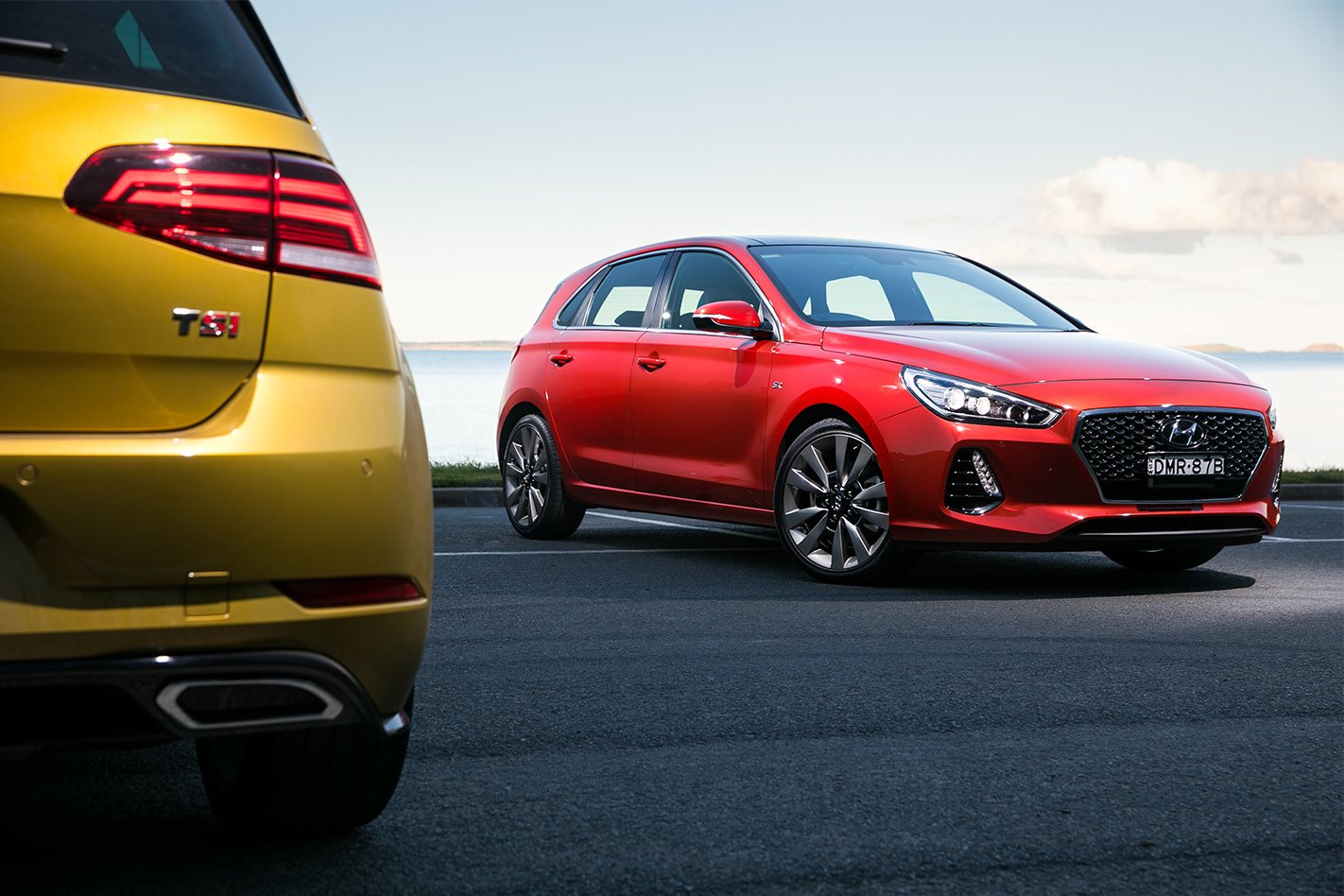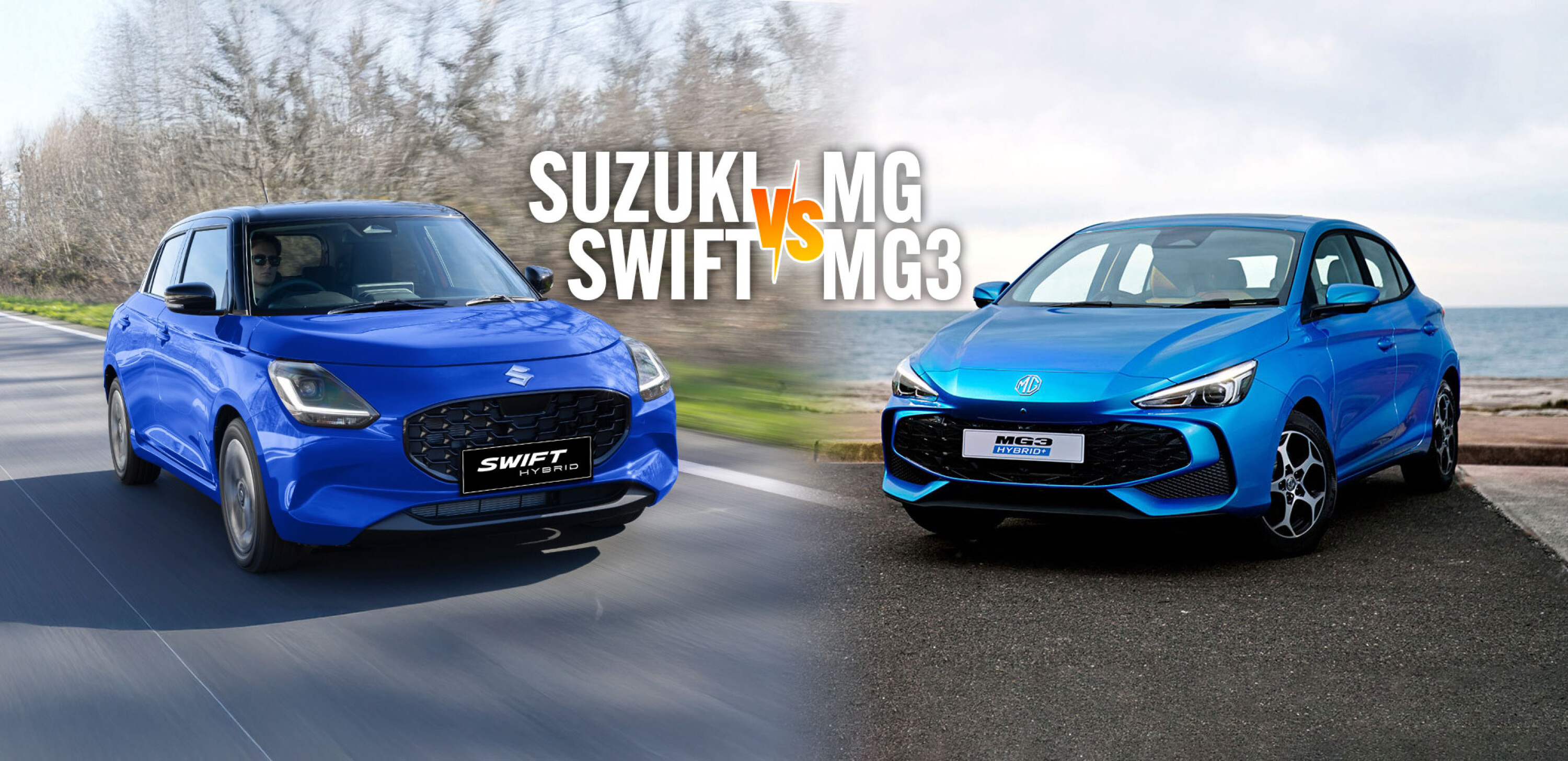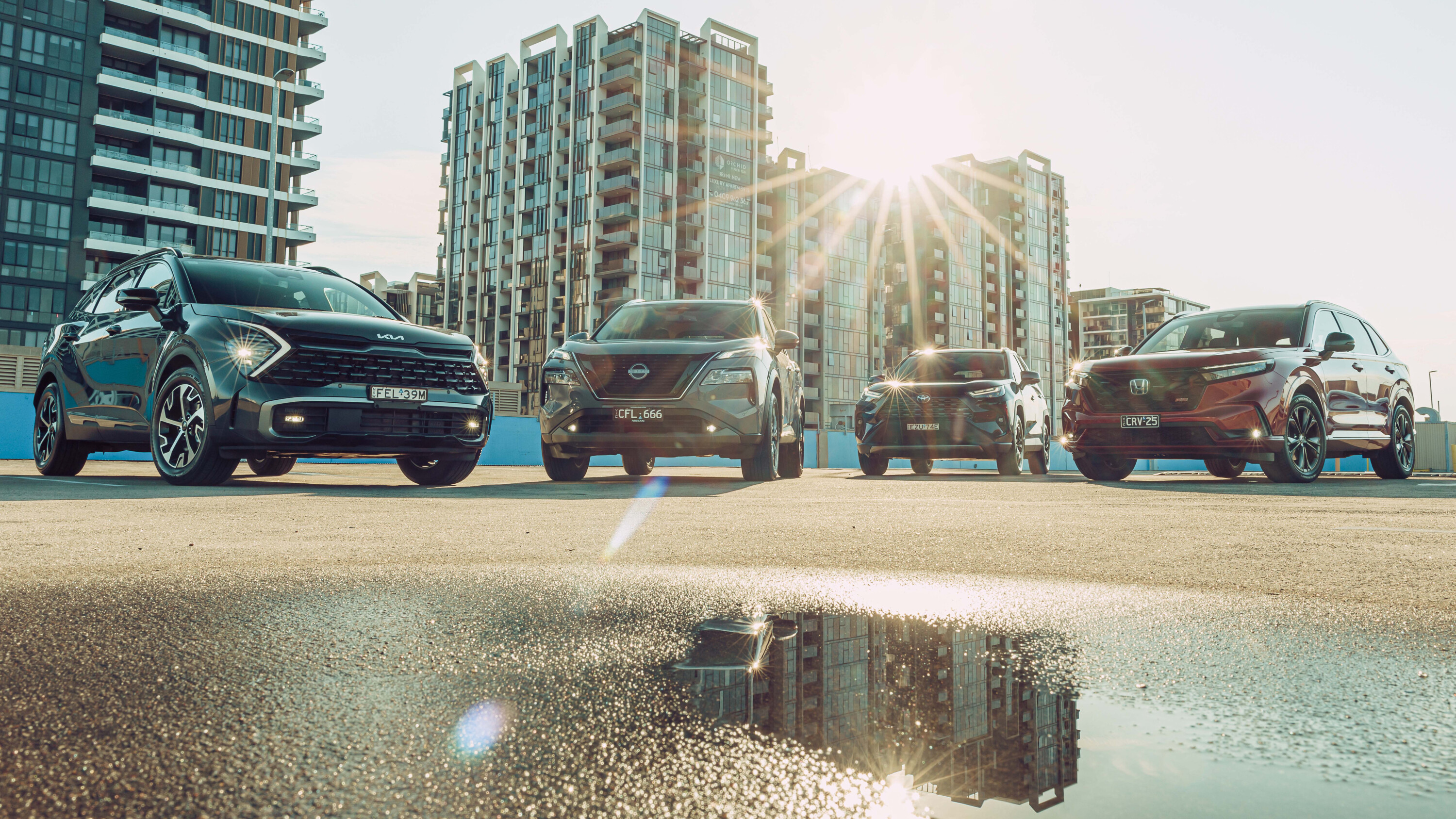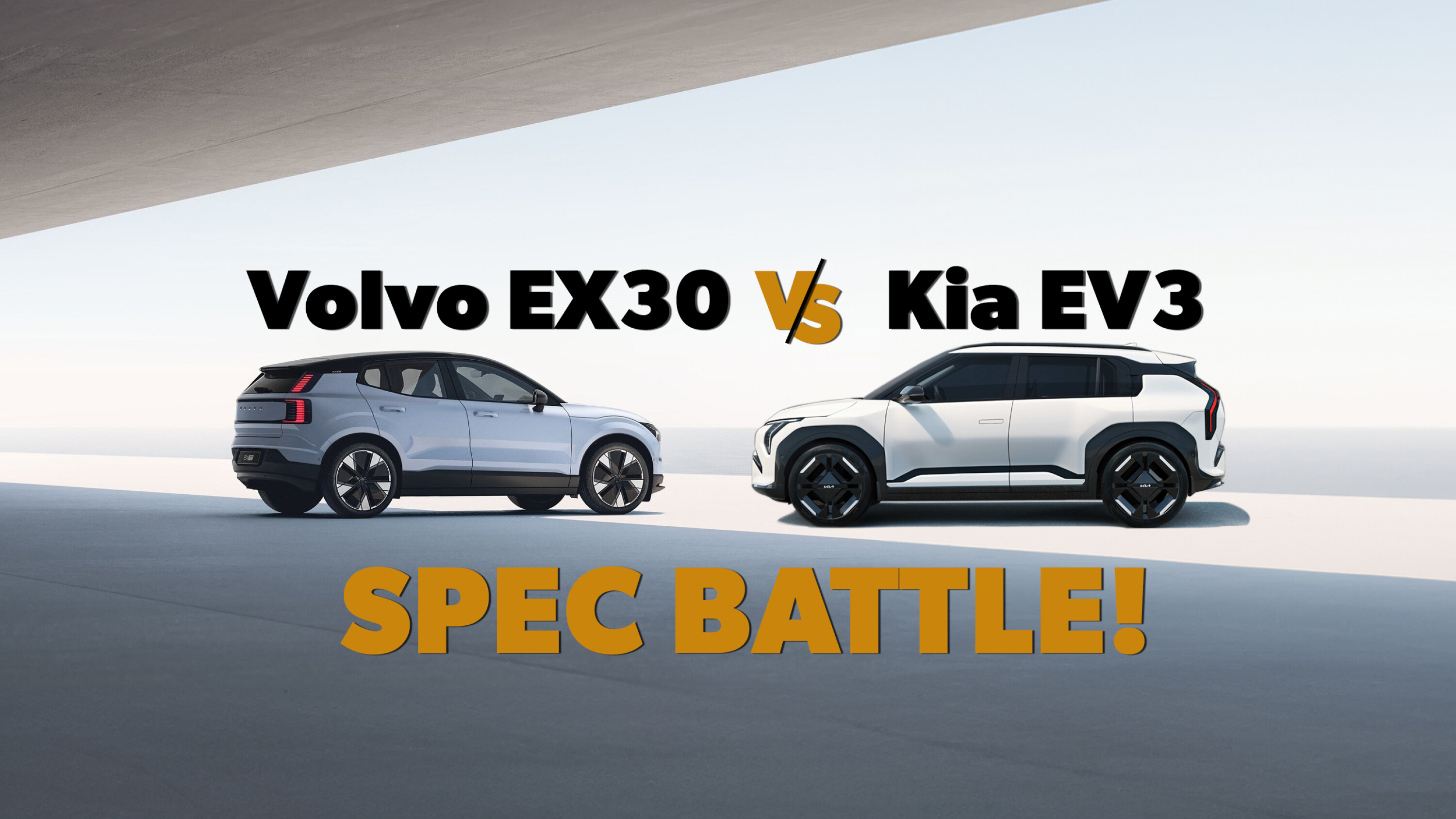BEING particularly useless at suspense, I’m going to start with a spoiler.
The Golf 7.5 isn’t markedly different to the Golf 7 it has replaced. Volkswagen’s claim to have digitised the Golf hasn’t altered its fundamental character. We know the Golf 7 was great, so expect more of the same from iteration 7.5. Are we focusing on plot rather than character development here? Is this as much of an intro as we need to really get under the skin of the “new” Golf?
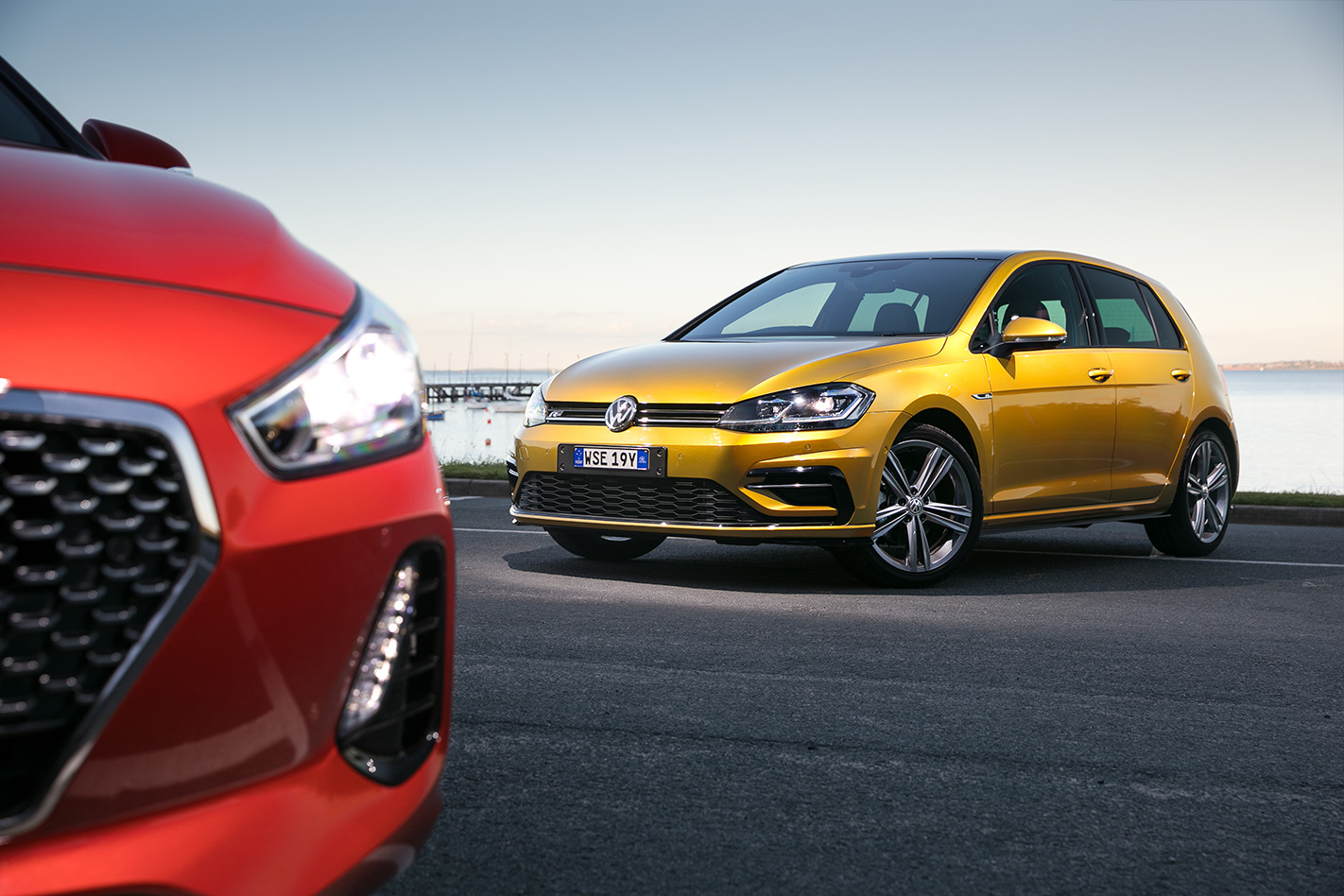
In other words this is a Golf 7 that’s been slugging back that energy drink that promises to improve you a bit. The Hyundai i30 SR Premium, on the other hand, can’t really be compared with what has gone before, so markedly improved is it in virtually every regard. Against the European haughtiness of the Golf, Hyundai still seems like a bit of an emergent brand, and the i30 SR a vehicle that in some prospective buyers’ eyes will need to perform twice as well to be thought of as half as good.
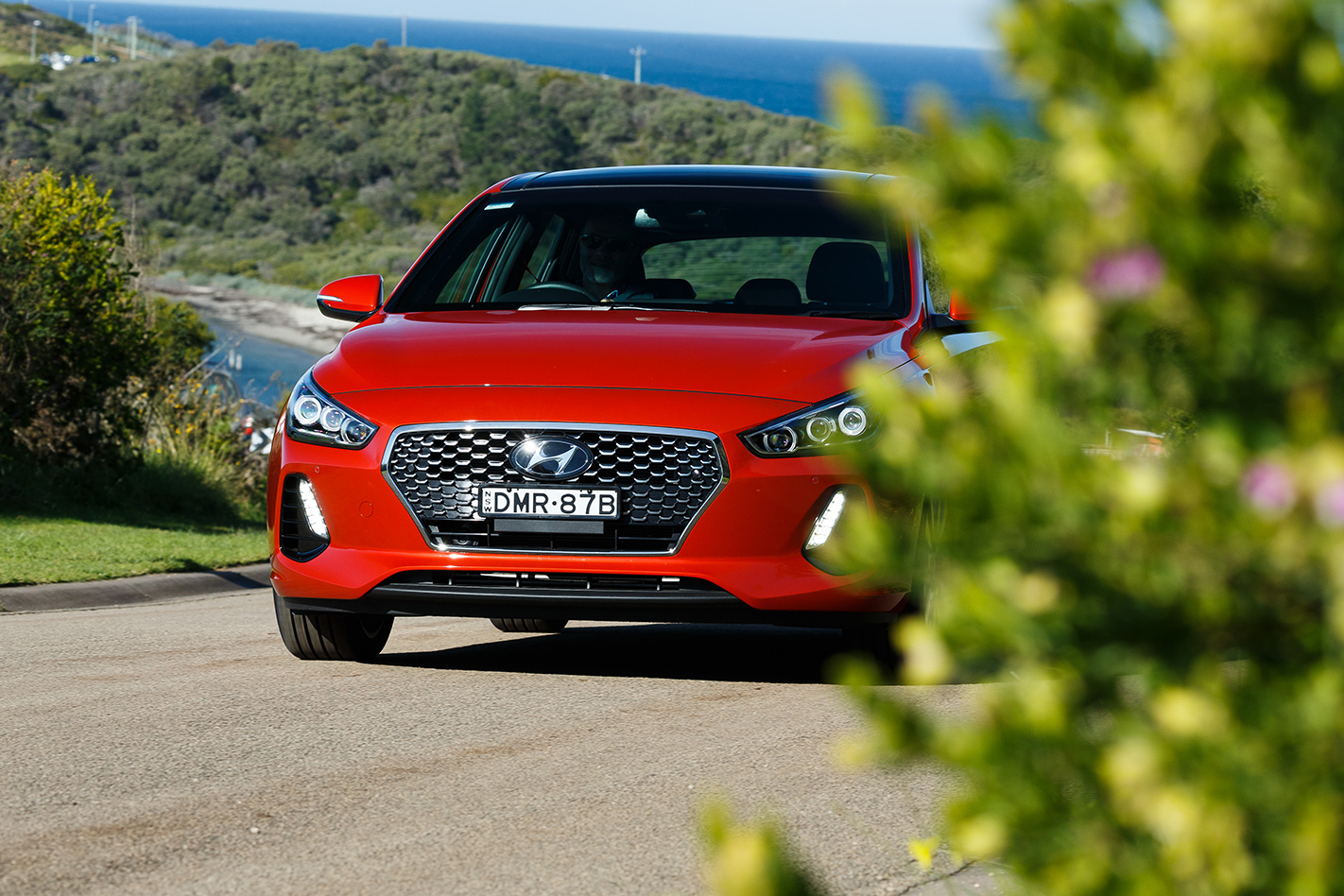
The Hyundai’s cabin is well finished, too, with anodised-look red details on the steering wheel, vent bezels and air con controls. I admit, this does sound terrible, but there’s just enough maroon in the palette to make them look anything but cheesy. The 1.6-litre SR Premium is a warm hatch and sometimes it doesn’t hurt to be reminded of that fact. The other way to alert you to its position in the i30 hierarchy is to mash the throttle pedal. At the Heathcote dragstrip, we recorded 0-100km/h in 7.3 seconds, with the 1.4-litre Golf a full second slower. Embarrassing admission time: the Golf was misfuelled with 95RON juice compared with the Hyundai’s 98RON, but even on a cold and rather damp track, it came within a tenth of Volkswagen’s quoted claim.
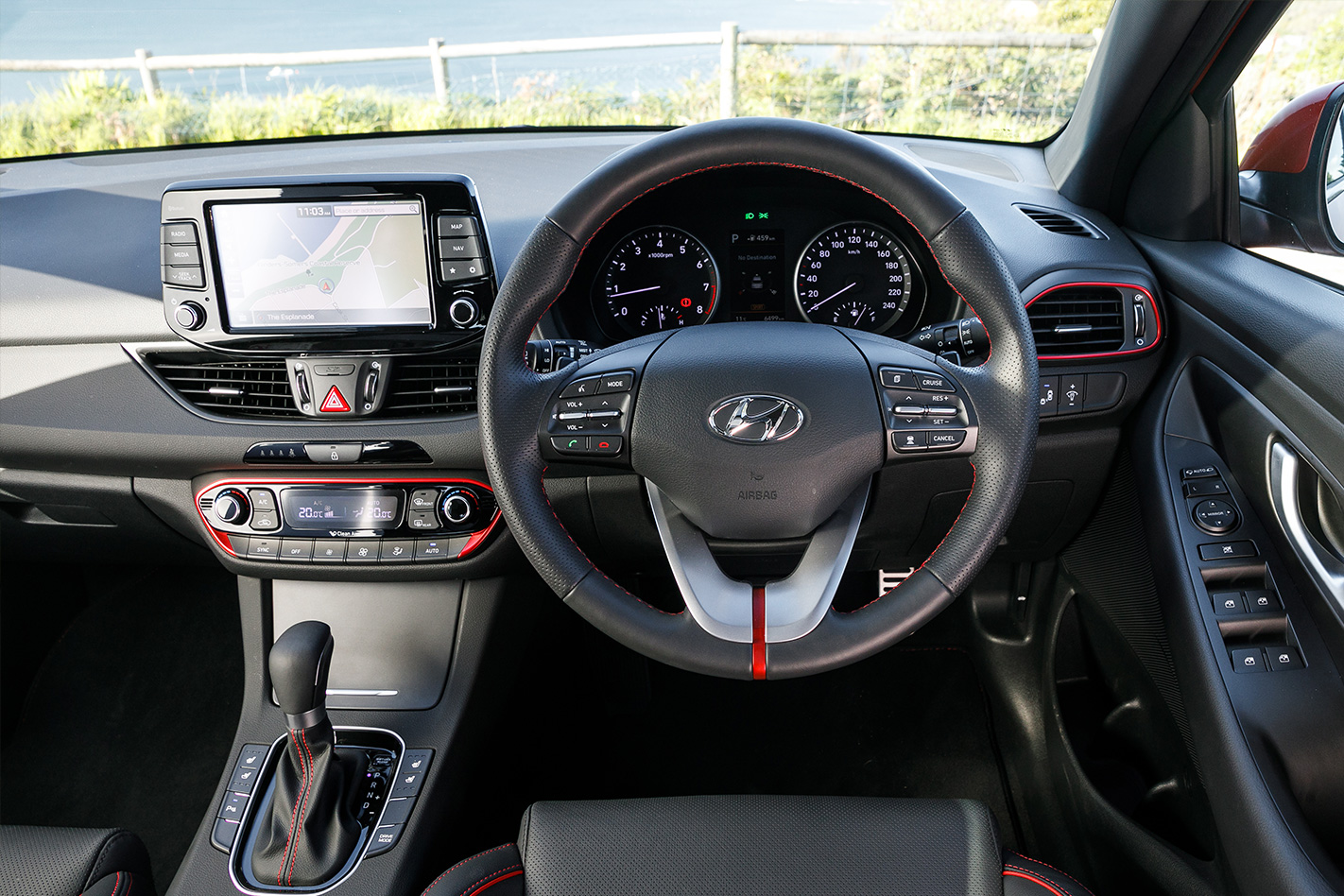
Pricing doesn’t help that perception. With no options and before on-roads, the i30 SR Premium costs $33,950, with the Volkswagen Golf 110TSI Highline adding $540 to that asking price. I can hear you wondering why you’d pay more for a car with a smaller engine, less power, a hugely inferior warranty, and which also consumes more fuel, has a smaller boot and a less-generous equipment provision. We did.
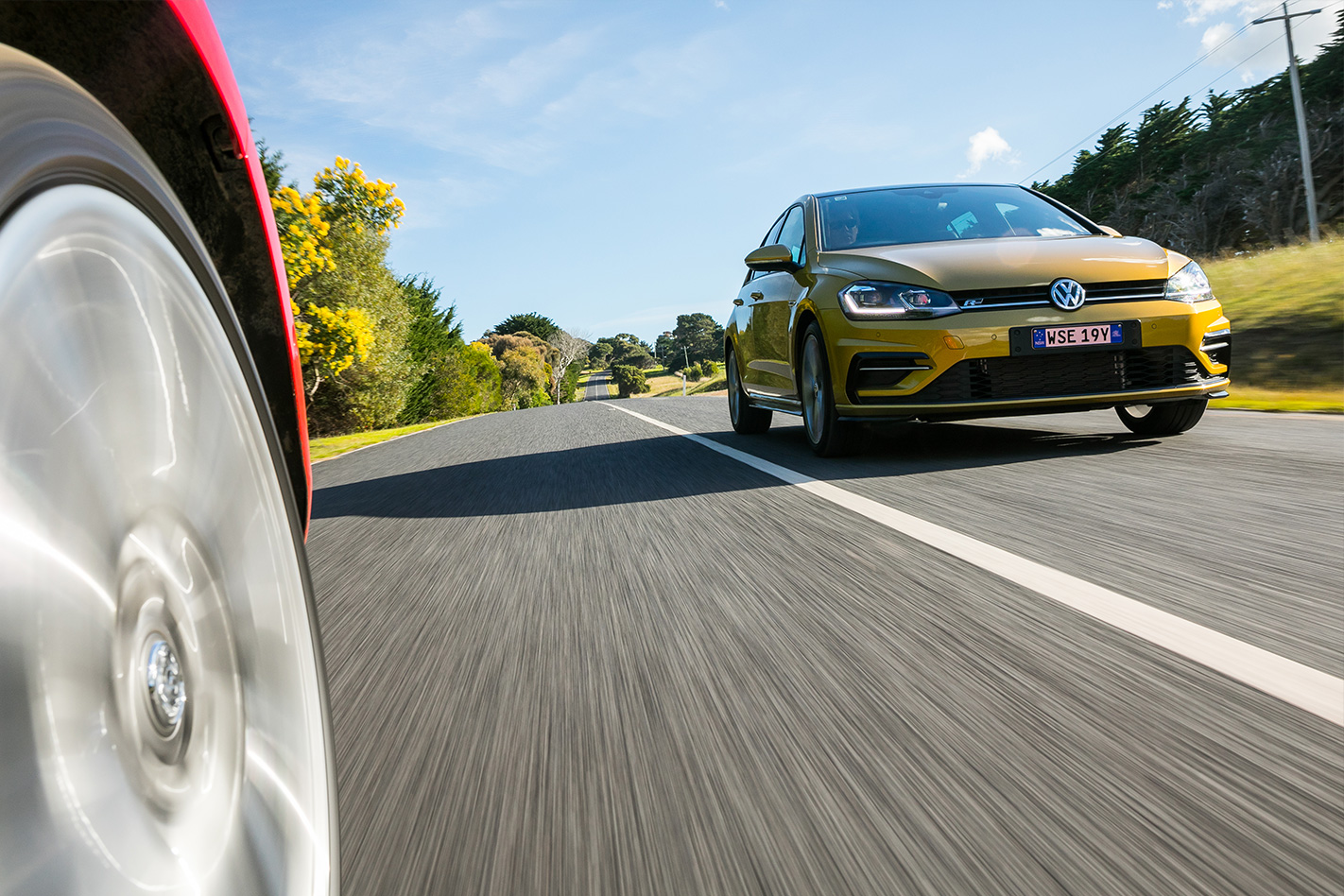
Hyundai’s a fast learner, and the i30 manages to land a few body blows on the Golf, but not enough to score a knockout. Or a decision on the judge’s scorecards, come to that. The Volkswagen is just too polished, the ergonomics are just so well thought through, the dynamics of the vehicle so exquisitely honed that it makes the Hyundai appear something of an arriviste. The genius of the Golf is in being better at all the things that aren’t immediately apparent; the aspects of a car’s development that require a deep and measured understanding.
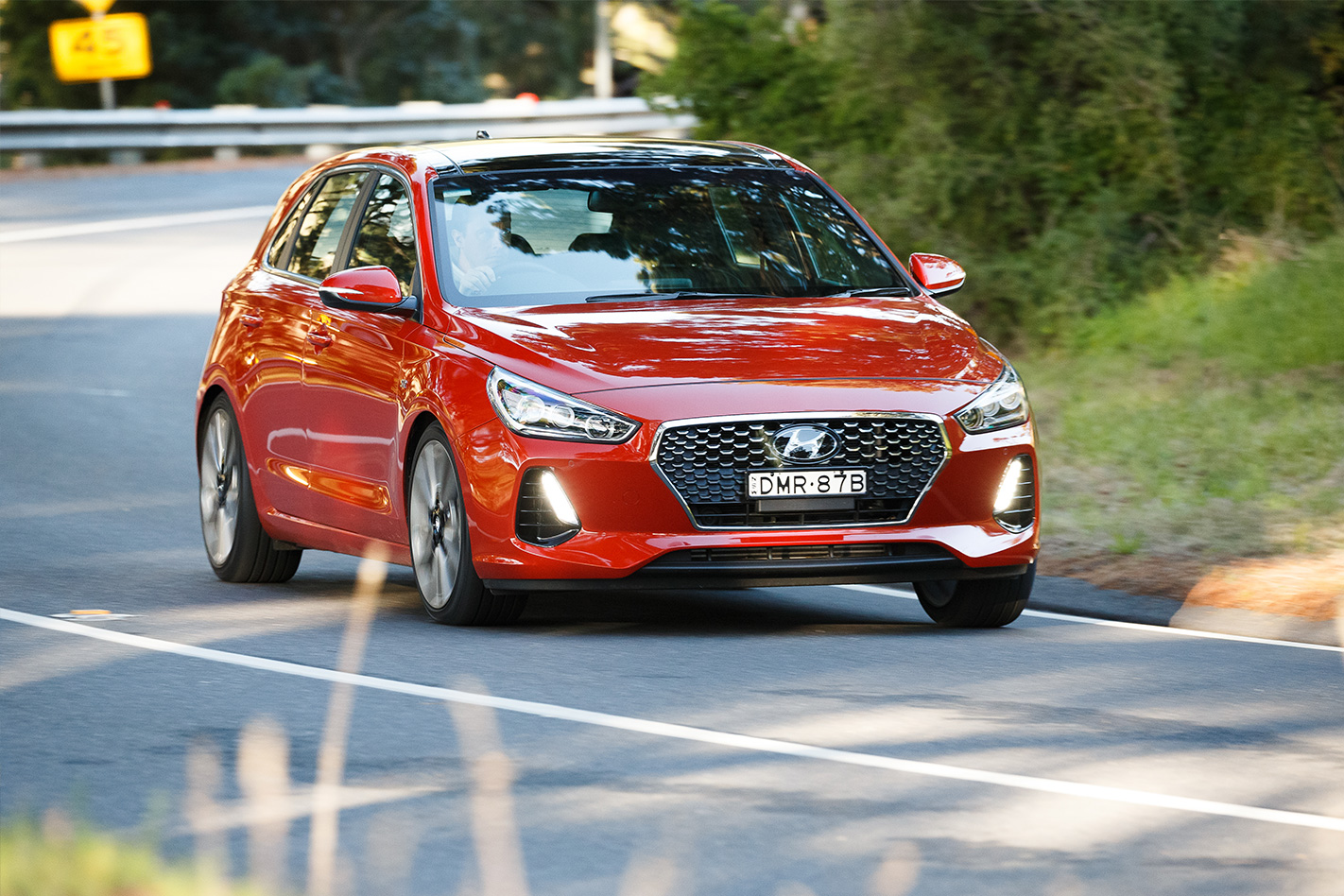
Even when you’re not driving like a berserker, you’ll appreciate the Golf’s classier interior touch points, the beautifully logical dial pack, the lower hip-point in the car and the better seats. An example of Volkswagen just coming up with a better solution is the starter button. On the Golf it’s in plain sight on the centre console next to the shift lever. Think through the actions you need to make to start the car. Brake pedal in, press button, move shift lever to drive. One fluid action.
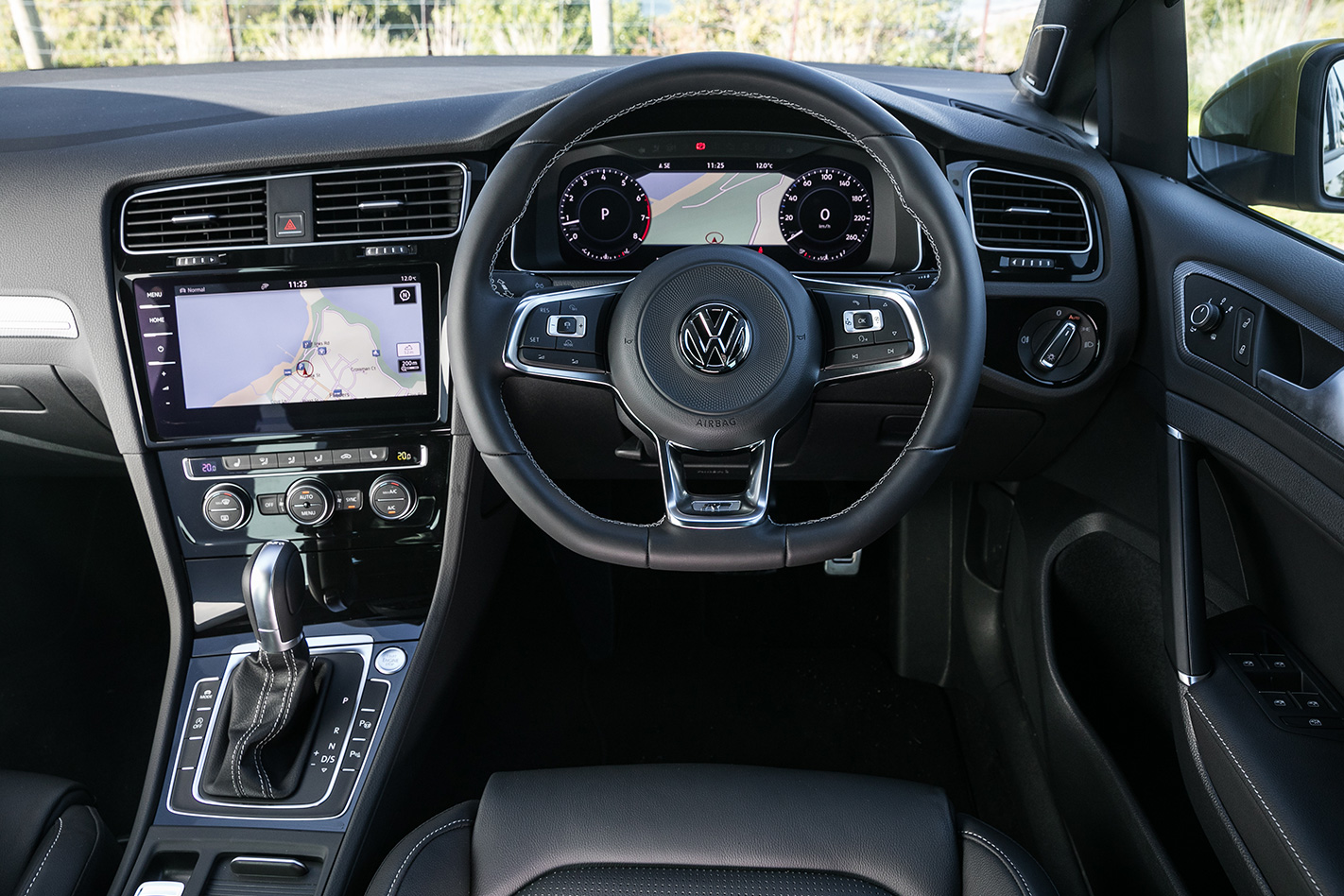
So while we were extremely impressed by the Hyundai, to quote an old TV series: “Come at the king, you best not miss.” The i30 SR Premium is a very accomplished warm hatch, and it’s one that we’d issue a firm “buy” recommendation for. If the warranty holds significant value for you, it’s doubtful that you’d experience too much in the way of buyers’ remorse. But the Golf is just a more cerebral thing, a car with qualities that – we trust – Wheels readers will see the value of. But you knew that already. Like I said, I’m useless at suspense.
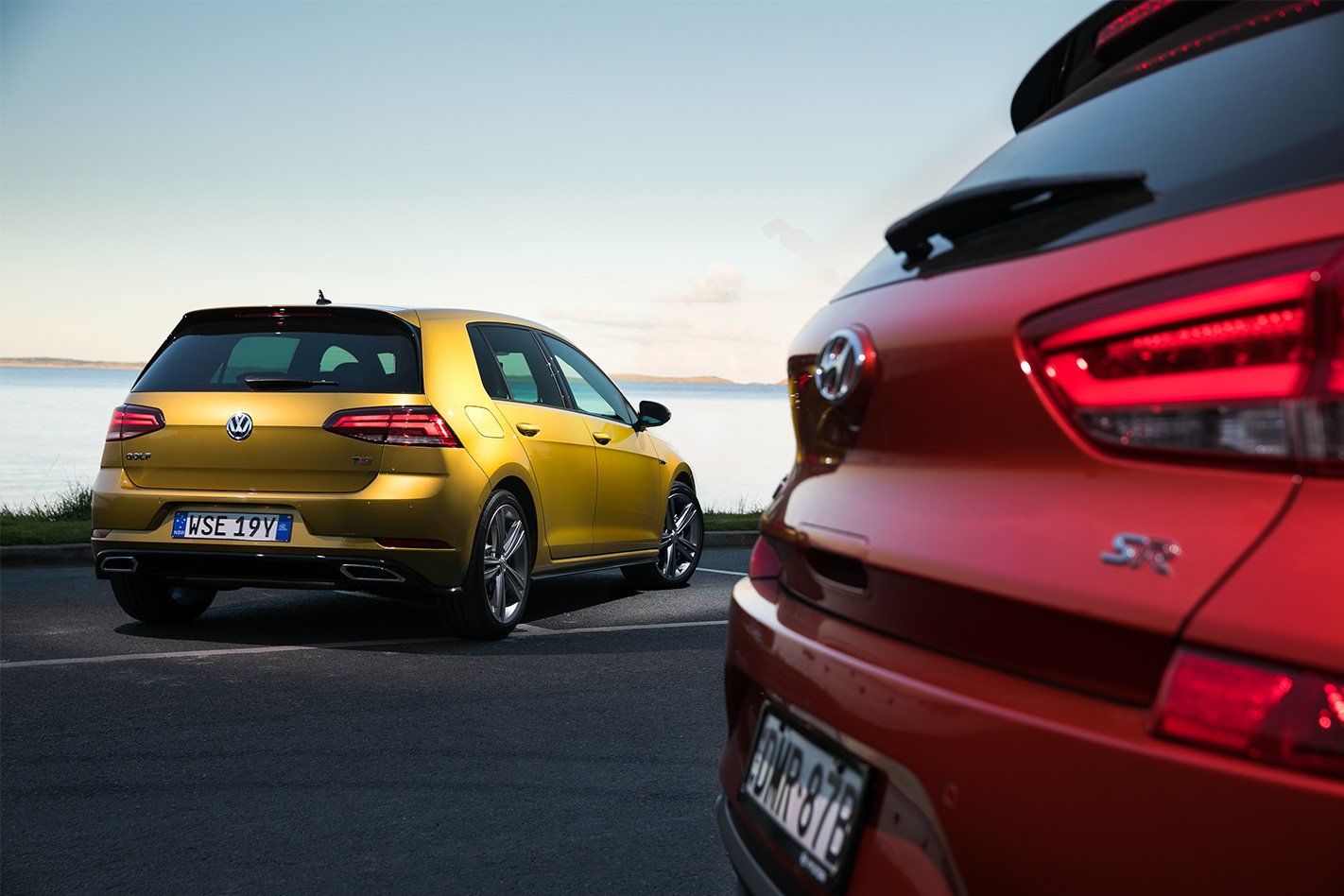
Engine: 1395cc 4cyl, dohc, 16v, turbo Power: 110kW @ 5000-6000 rpm Torque: 250Nm @ 1500-3500 rpm Transmission: 7-speed dual-clutch Weight: 1312kg Fuel economy: 8.5L/100km (as tested) 0-100km/h: 8.3sec (as tested) Price: $34,490 On sale: Now
Model: Hyundai i30 SR Premium auto
Engine: 1591cc 4cyl, dohc, 16v, turbo Power: 150kW @ 6000 rpm Torque: 265Nm @ 1500-4500 rpm Transmission: 7-speed dual-clutch Weight: 1436kg Fuel economy: 7.8L/100km (as tested) 0-100km/h: 7.3sec (as tested) Price: $33,950 On sale: Now


